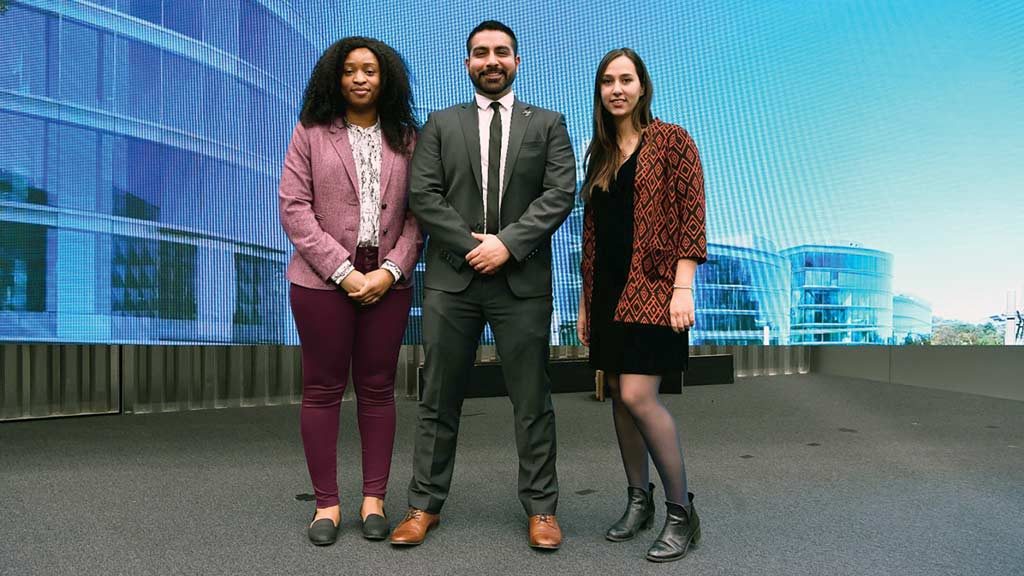A group of University of Toronto graduates who were internationally recognized for a proposal to create more environmentally friendly concrete for developing nations is taking its research to the next level.
Their research will explore using brine water — a byproduct of desalination that is usually dumped — along with specific microbes to create self-healing concrete while not tapping into precious drinking water supplies.
David Aceituno-Caicedo, a graduate of U of T Scarborough’s Master of Environmental Science program is going on to his PhD program based on the concept first formulated by his colleagues, Kimberly Asemota and Blandine Barthod, also Master of Environmental Science students at UTSC. Barthod was doing a one-year exchange program from the University of Geneva.
All three will continue to collaborate on the project as it develops, he says.
They entered their idea into the Geneva Challenge, a competition for masters’ students globally. They made it to the top 15 global semi-finalists and walked away with the UN Sustainable Development Solutions Network (SDSN) Youth Special Prize which was presented at awards ceremony in Geneva last January.
While the basic idea of using microbes in concrete to create self-healing concrete isn’t new and nor is using brine — the Romans used seawater to create concrete structures that have survived today — the idea of combining the two and using a waste product to divert it away from potentially harming the environment takes it to the next level.
There’s a lot of work yet, says Aceituno-Caicedo: “We’re going to try to apply this in a laboratory setting to develop what kind of bacteria can appropriately be used.”
They’re also going to be combing through the existing research to push them ahead.
“We’re going to be going through the research to get more of a concrete idea going forward, more of a foundation,” says Asemota. “And that’s going to include concrete mixes and other options. Specifically, we want to look at brine and bacteria too.”
The next step after surveying the research is to look at what concrete-friendly microbes can survive and thrive in a brine environment and which ones are optimal for enhancing the structural properties and curing process.
Their theoretical model looked at Cape Town in South Africa where there is a looming drinking water shortage but still demand for concrete for infrastructure construction.
Because the city is coastal, there are desalination plants which in turn provide brine.
The key for them is to help fight climate change and preserve environmental resources while promoting a closed circuit where waste becomes a resource.
They’ve started collecting samples from around the world of different components to start assembling a library of assets.
Funding for the project will come through the PhD program at the University of Toronto but sponsorship is high on the group’s wish list.
The group is at the beginning of the process. It wants to get something more tangible before accelerating the work, says Barthod. “That’s why David is doing the PhD to get there.”
It all started when Aceituno-Caicedo and Asemota took a geo-chemistry micro biology course and were delving into microbes and how they can be used to extract minerals. That led to a module and self-healing concrete which uses microbes. From there the discussion widened.
Maria Dittrich, an associate professor in the department of physical and environmental sciences connected them with Barthod. The trio then cooked up the idea of using brine laced with microbes to make more sustainable concrete.
“I’m working with that same professor now on my PhD which is cool,” says Aceituno-Caicedo.
Once they determine the right microbes, there will be logistical challenges on how to breed, package and transport them to locations for use in concrete-making. There is also the question of ascertaining how much fly ash or granulated blast furnace slag is optimum and what other waste products can be added to the mix to divert them from landfill but still produce strong concrete.






Recent Comments
comments for this post are closed